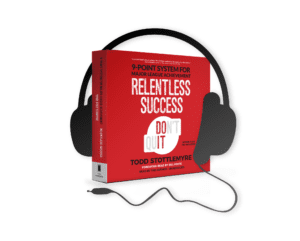Introduction
As a manager, there’s no question that you need a high-performing team. You want people who are motivated, engaged and working well together. The good news is that building such a team isn’t hard–if you know what to look for in potential hires and how to keep your staff happy once they’re on board!
Hire for fit.
Your company’s culture is the environment in which your employees work and play, so it should be a top priority to find people who are a good fit for that environment. When hiring, consider whether or not a candidate will be able to thrive in your company’s culture–both on their own and as part of a team. If they can’t meet these standards, then they probably won’t be able to do their job very well either!
Understand what motivates top performers.
As you’re going through this process, it’s important to understand what motivates top performers. It’s also important to note that what motivates one person may not motivate another.
For example, if you ask most people why they want a job and their answer is “for the money,” it’s likely that they’ll be motivated by financial compensation and benefits. However, if your company offers above average salaries but no other perks or incentives for working there (such as flexible hours), then even though this person could get paid more somewhere else, he would still choose not to take another job because of all the non-monetary factors at play in his life and career path–things like location or commute time being less than five minutes away from where he lives with his family; having flexibility around when he works; knowing that everyone else on staff also has these same needs met so there won’t be any resentment among coworkers over who gets what privileges first after getting promoted into management roles within three years’ time…etcetera!
Communicate clearly and often.
- You should be using different methods of communication, such as emails, in-person meetings and phone calls. Make sure you’re using the right channel for each audience member; if they don’t understand what you’re saying because it’s too technical or too casual for them then it defeats the purpose of communicating with them at all!
- Use visuals to help your message stick in people’s minds better than words alone would do. Don’t underestimate how powerful a picture can be when trying to get across an idea or concept; pictures have been proven time and again as being able to increase comprehension among learners by up 90%, so why not give yours a try?
Set clear goals and expectations.
The first step in building a high-performing team is to define your objectives. Before you start on a solution, it’s important to define the problem. This may seem obvious, but many managers fail to do this and then wonder why their teams aren’t performing as well as they’d like them too.
When setting goals for yourself or your team members, it’s best not to worry about what other people are doing or how they’re doing it–you’ll only get distracted from reaching your own goals by comparing yourself with others who aren’t working towards similar things. Instead of worrying about whether or not someone else is getting better results than you are (or vice versa), focus on setting ambitious yet realistic expectations for yourself based on where you are now and where someone else might be at any given time during their journey towards success
Have regular check-ins with employees.
If you’re looking to build a high-performing team, check-ins are an essential part of the process. These regular meetings allow you to stay in touch with your employees and get their feedback on how things are going at work.
Informal check-ins can take place any time during the day or week–at lunch, after work or on weekends–and usually involve just one person talking about what’s going on in their lives and how it affects their job performance. Formal check-ins usually involve both parties sitting down together for 30 minutes or more so that they have time to discuss important topics such as goals, strategies for improvement and career opportunities within the organization (or outside).
Be flexible about time off, vacations and other time commitments that enable your team to recharge their batteries.
Flexibility is a key component of high performance. As your team grows and changes, you need to be able to adjust with them. In addition to offering flexible work hours and vacations, consider offering policies that support other aspects of their lives: flexible parental leave, telecommuting options and more.
Create a trusting environment where people feel free to make mistakes (without repercussions).
It’s important for employees to feel comfortable taking risks, because mistakes are often the best way to learn. If you create a culture of fear and punishment, your team members will be less likely to take chances or even admit when they’ve made a mistake–and this can have disastrous results for your business.
Instead of punishing people when they make mistakes, focus on helping them learn from them and avoid repeating similar errors in the future. For example: A salesperson might lose out on an important deal because he doesn’t understand how much his product costs per unit; instead of getting angry at him or firing him outright (which would only reinforce his sense of failure), talk with him about why he didn’t know how much each unit costs and how it affects his price point. Then help him develop strategies for making sure that doesn’t happen again (e.g., by setting up regular meetings between salespeople).
Be transparent about company direction so both managers and employees can work toward the same goal. (Note – this may require talking with upper management if you don’t feel they’re sharing enough.)
It’s important to be transparent about company direction so both managers and employees can work toward the same goal. If you don’t feel that upper management is being transparent enough, you may need to have a conversation with them about this issue.
Pay close attention to employee engagement and morale levels
Pay close attention to employee engagement and morale levels, which can impact productivity at home as well as at work–especially if key members of your team are not performing well due to family or personal issues. For example, if someone has been gone on medical leave or out on maternity leave, make sure they get caught up on things they missed while they were away so they can stay productive without additional stress. Employee engagement is important. Not only does it help your employees feel more connected to their jobs, but it can actually have a positive impact on productivity at home as well as at work–especially if key members of your team are not performing well due to family or personal issues. For example, if someone has been gone on medical leave or out on maternity leave, make sure they get caught up on things they missed while they were away so they can stay productive without additional stress.
Conclusion
The most important thing to remember is that your team is made up of people. It’s easy to get caught up in the idea that employees are just cogs in a machine or tools for getting work done, but at the end of the day, they’re human beings who have lives outside of work–and those lives will affect their performance at work. If you want to make sure your team stays productive and happy, then you need to make them feel valued as individuals.









